Feel the heartbeat of Japanese summer through dazzling fireworks and vibrant festivals.
August in Japan is a magical time when the night skies light up and the streets come alive with energy. From traditional dances and colorful yukata to breathtaking hanabi displays, this is your chance to dive into the unforgettable spirit of a Japanese summer.
Here’s your guide to the must-see fireworks and summer festivals happening across Japan in August 2025!
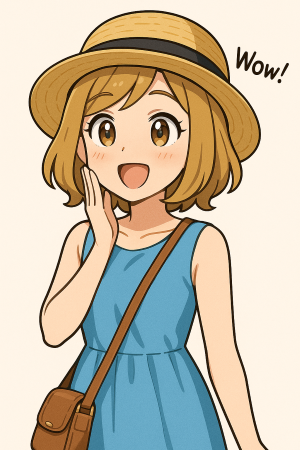
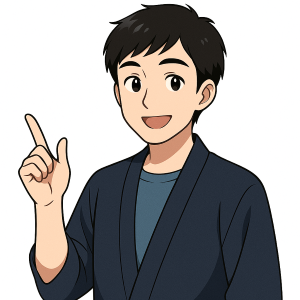


1. Introduction – Feel the Summer Spirit in Japan
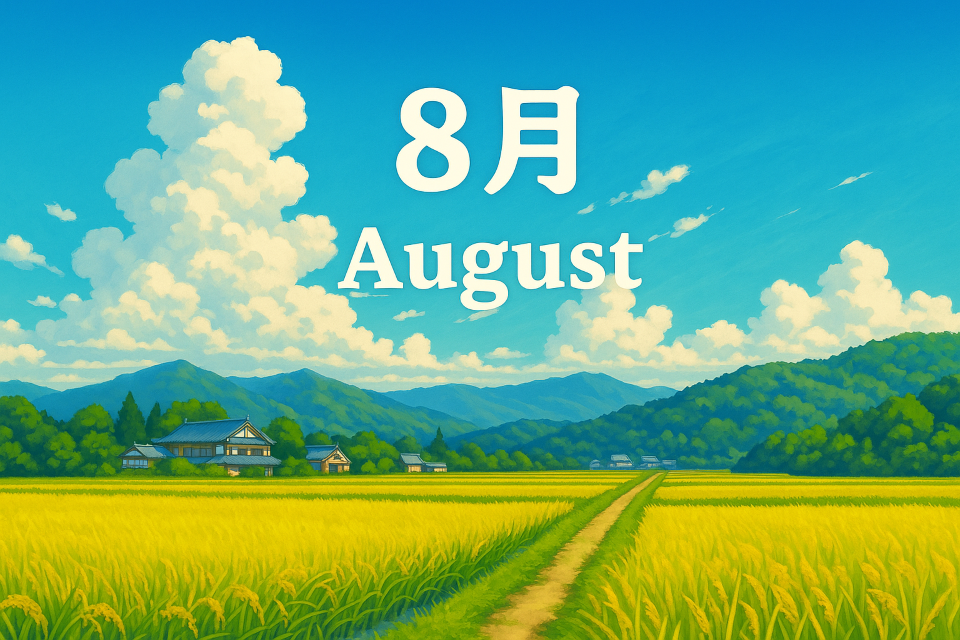
Summer in Japan is a unique season where tradition and excitement come together.
In August, Japan bursts to life with festivals and fireworks that captivate the senses. The atmosphere is electric—filled with the sounds of taiko drums, the glow of lanterns, and the dazzling colors of hanabi (fireworks) painting the night sky.
These summer events are more than just entertainment—they're cultural experiences rooted in centuries-old traditions. Whether you're dancing in a local parade or watching fireworks from a riverside, Japanese summer offers moments of joy, nostalgia, and deep connection to the season.
Fireworks and Matsuri: The Symbols of Japanese Summer
When people think of summer in Japan, fireworks (hanabi) and festivals (matsuri) are often the first things that come to mind. These iconic events are held all over the country—each with its own local flavor and history.
From riverside fireworks shows that light up the night sky to traditional festivals filled with food stalls, music, and dance, these celebrations bring communities together and offer unforgettable memories for both locals and visitors alike.
Don’t Miss These Must-See Events in August!
Planning to visit Japan in August? You’re in for an unforgettable summer. This is the peak season for festivals and fireworks across the country, offering visitors a perfect mix of cultural immersion and seasonal excitement.
In the sections below, we’ll introduce some of the most popular and breathtaking events happening in August—each one with its own unique charm, history, and energy. Get ready to explore Japan at its most festive!




2. Must-See Fireworks Festivals in August 🎆
Nagaoka Fireworks Festival (新潟県) – 8/2〜8/3
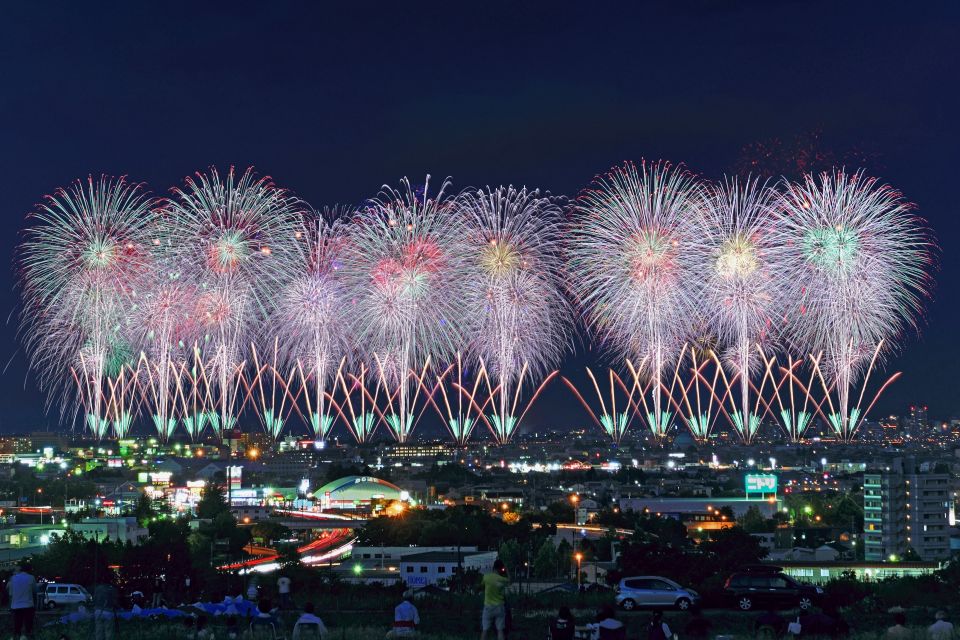
The two-day event not only honors the memory of wartime recovery but also celebrates peace and resilience. Visitors from all over Japan and abroad flock here to witness its scale, harmony, and heart-stirring music synced with light.
・Arrive early—riverside seats fill up quickly by mid-afternoon.
・Bring a picnic blanket or buy local festival food at the stalls (yakitori, takoyaki, kakigori).
・Tune into the official FM broadcast (English available) to enjoy commentary and music.
・For the best view of the Phoenix fireworks, position yourself near the Chosei Bridge.
The Story Behind the Phoenix Fireworks
Rising from Tragedy: A Symbol of Hope and Recovery
One of the highlights of the Nagaoka Fireworks Festival is the awe-inspiring “Phoenix Fireworks” display. It was first introduced in 2005 to commemorate the victims and recovery from the 2004 Niigata Chuetsu Earthquake.
Just like the mythical phoenix that rises from ashes, this enormous firework sequence symbolizes the strength, resilience, and hope of the local community. The display spans hundreds of meters across the sky and is choreographed with moving music such as “Jupiter” or “Sen no Kaze ni Natte,” leaving a deep emotional impact.
Many visitors say it’s not just fireworks—they feel like they’re witnessing a message from the heart. Don’t miss this powerful tribute during your visit in August!
Ticket Options & Viewing Areas
Plan Ahead for the Best Fireworks Experience
The Nagaoka Fireworks Festival offers several types of reserved seats to ensure you get the best view. Popular options include:
- Riverbed seats (Shinano Riverside): Close to the launch site, ideal for viewing powerful displays.
- Bridge view seats: Unique perspective across the river with symmetrical firework reflections.
- Family/group seating zones: More spacious areas suitable for families with children.
Tickets typically go on sale in early June and can sell out quickly, especially for premium seats. Online reservations, convenience store purchases (e.g., Lawson, 7-Eleven), or travel agencies in Japan are common methods.
If you’re planning to attend, it’s recommended to secure your seat well in advance to avoid crowds and enjoy the show comfortably.
Access & Accommodation Tips
Travel Smart and Rest Easy in Nagaoka
Nagaoka is easily accessible via the Joetsu Shinkansen from Tokyo, taking about 2 hours. On fireworks days, however, stations and roads get extremely crowded—so early arrival is key.
Special shuttle buses and temporary traffic restrictions are common. It’s recommended to check local transportation updates and consider walking from nearby stations such as Nagaoka Station or Miyauchi Station.
For accommodations, hotels in central Nagaoka fill up months in advance. If fully booked, nearby cities like Niigata City or Sanjo offer additional options within train reach. Booking early is highly recommended.
More to Explore in Nagaoka
Discover Local Culture, History, and Flavors
While the fireworks are a major attraction, Nagaoka offers much more for curious travelers. Start with the Nagaoka War Damage Exhibit Museum, which tells the story of the city’s reconstruction after WWII. It’s deeply tied to the message behind the Phoenix fireworks.
For nature lovers, visit the scenic Yukyuzan Park, known for its peaceful pond, small zoo, and seasonal flowers. If you're into science and space, check out the Niigata Science Museum or Echigo Hillside Park.
And don’t miss the local food! Try Nagaoka’s soy-sauce-based ramen, fresh river fish dishes, or seasonal fruits like Niigata pears. Local sake breweries also offer tours and tastings for adults.
🗓 One-Day Model Plan for Nagaoka Fireworks Festival
Morning:
Arrive at Nagaoka Station by Shinkansen and store your luggage in a coin locker to explore freely.
Visit nearby spots like the Nagaoka War Damage Exhibition Hall or Aore Nagaoka to learn about the city’s history.
Lunch:
Enjoy the local specialty—Nagaoka ginger soy sauce ramen—at a popular noodle shop near the station.
Afterwards, browse souvenir shops offering local sweets and gifts.
Afternoon:
Relax in nature at places like Yūkyūzan Park or Echigo Hillside Park.
Before heading to the fireworks venue, stock up on drinks and snacks at a convenience store or supermarket.
Around 4:00 PM:
Head to the riverside fireworks venue and secure your spot in the reserved seating or free viewing area.
Since the area gets crowded, allow plenty of time for arrival.
7:20 PM – 9:10 PM:
Enjoy the spectacular fireworks show, including the emotional Phoenix display and breathtaking Niagara falls-style fireworks.
After the Show:
To avoid congestion, consider relaxing at a café before heading back to the station.
If you're staying overnight, make sure accommodations are booked in advance. If returning same-day, opt for a late-night train.
Edogawa Fireworks Festival (東京都) – 8/2
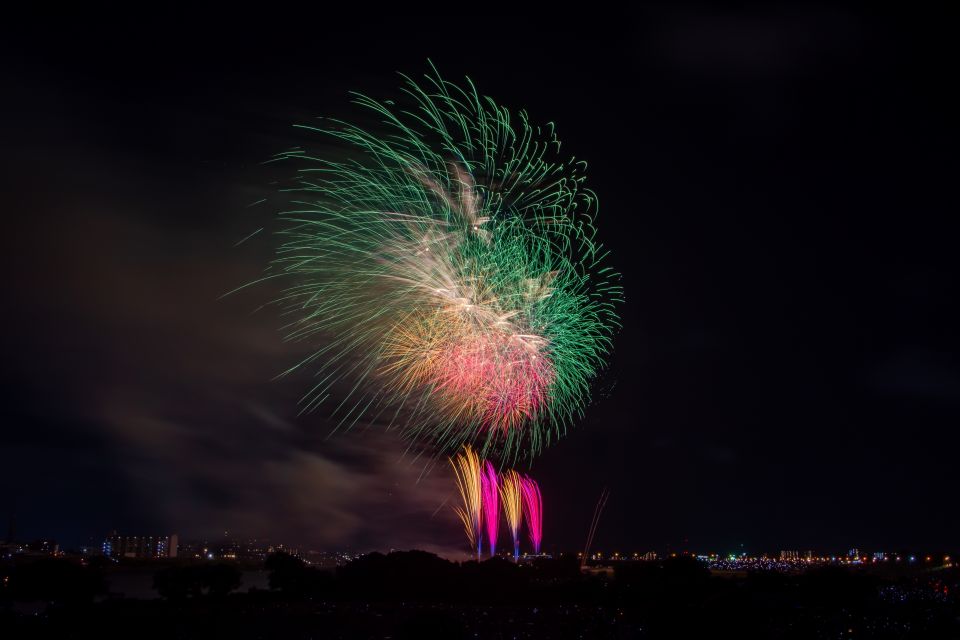
With its convenient urban location and synchronized music-fireworks choreography, it draws nearly one million visitors each year. Families, couples, and photography enthusiasts flock to riverside spots to witness the dramatic bursts and colorful formations light up the summer night.
・Arrive by 3pm to secure a good riverside spot—some locals come even earlier!
・Best viewing areas include Shinozaki Park and the Edogawa Riverbank on the Tokyo side.
・Bring folding chairs or picnic sheets, and grab festival snacks like yakisoba and shaved ice.
・Public transport is crowded—consider walking a bit from farther stations to avoid congestion.
🎆 Highlights of Edogawa Fireworks Festival
Each section of the 75-minute program is set to music, often inspired by pop hits, movie soundtracks, or classical pieces, creating an emotional experience. The “Rainbow Niagara” and “Golden Waterfall” segments are especially popular, illuminating the sky in waves of color and cascading light.
With a focus on speed, variety, and perfect synchronization, the Edogawa show delivers an exhilarating performance that keeps viewers glued to the sky.
Seating Tips & Fun Facts
To get a good spot, especially on the Edogawa side (which is generally recommended for its wider view), it's best to arrive early and bring a leisure sheet to mark your place and sit comfortably.
Be aware that there are only a few food stalls near the venue itself. It’s wise to buy your snacks and drinks in advance—Koiwa Station area is a convenient place to grab everything you need before heading to the riverbank.
After the fireworks end, try waving toward the opposite side of the river using your phone light or glow stick. If you're lucky, you’ll see people on the other side waving back in unison—creating a magical, twinkling connection across the river!
How to Get There & Stay Safe
Most visitors are day-trippers, as there are limited accommodation options near the venue. If you plan to stay overnight, consider booking hotels near Kinshicho, Funabashi, or Tokyo Station well in advance. Also, double-check train schedules for the last departure to avoid getting stranded.
Beyond the Fireworks – Explore the Local Charm
Alternatively, you can visit Katsushika City Museum or enjoy a walk along the Edogawa cycling path for a calm riverside vibe. On the Chiba side, Ichikawa Zoological & Botanical Garden is great for families with kids.
・Shibamata Taishakuten – A stunning temple with intricate wood carvings
・Yagiri-no-Watashi – A traditional river ferry still in use
・Tokyo Mizube Cruising Line – Scenic boat rides through canals and rivers
・Koiwa Iris Garden – A tranquil park that’s beautiful in early summer
A Perfect Day at Edogawa Fireworks Festival 🎆
🌅 Morning: Start your day with a visit to the nostalgic neighborhood of Shibamata. Stroll along the Taishakuten Sando shopping street, admire the carvings of Taishakuten Temple, and grab a sweet rice snack like kusa-dango for energy. It's a perfect way to immerse yourself in old-town Tokyo vibes.
🕐 Afternoon: Head toward Koiwa Station by early afternoon. Stop by a convenience store or supermarket nearby to stock up on drinks, snacks, and a picnic meal. Don’t forget a leisure sheet (picnic blanket) if you plan to sit on the riverside.
Choose your viewing spot on the Edogawa side of the riverbank for the best visibility and easy access. Get there by 3–4 p.m. for a good spot. While waiting, relax with your food, people-watch, or enjoy the occasional street performer.
🎇 Evening: As the sky darkens around 7:15 p.m., the show begins with a powerful burst of color and rhythm. Let yourself be amazed by the musical fireworks and the mirrored reflections on the water.
Before you leave, here’s a special tip: After the grand finale, turn toward the opposite side of the river and wave using your phone light or flashlight. You might spot hundreds of tiny lights waving back—a spontaneous show of connection between both banks!
Miyajima Water Fireworks Festival (広島) – 10/18
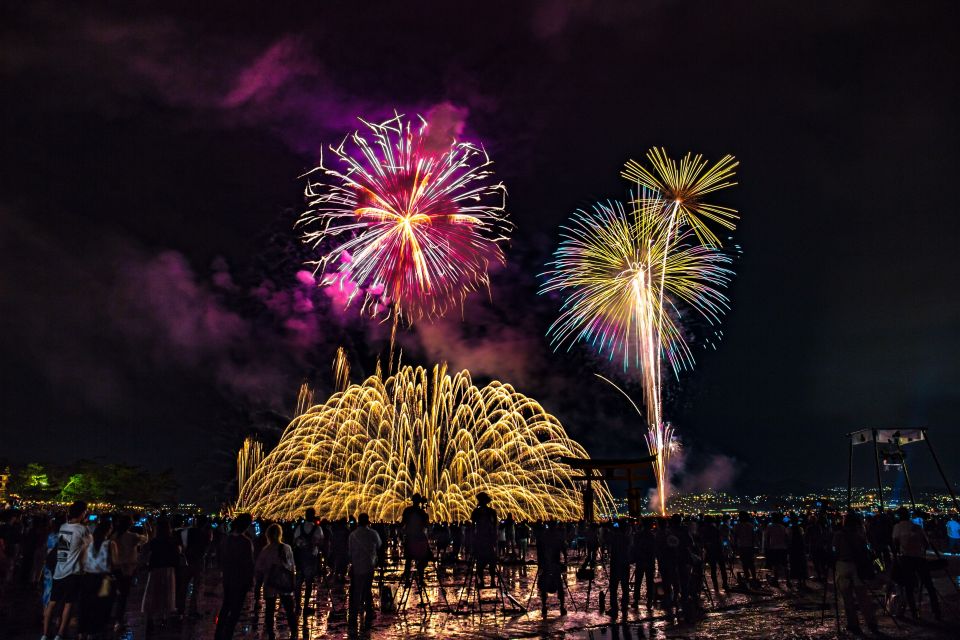
Located on the sacred island of Miyajima in Hiroshima Prefecture, the event is renowned for its stunning combination of traditional scenery and spectacular pyrotechnics launched directly over the water. As the fireworks bloom above the floating torii, the atmosphere becomes truly mystical—an unforgettable moment that blends nature, spirituality, and artistry.
・Arrive early to explore the island’s famous sites like Itsukushima Shrine and Mount Misen.
・Bring a jacket—October evenings can get chilly, especially near the water.
・The area near the torii gate gets crowded quickly; consider quieter viewing spots along the shore.
・Stay overnight in Miyajima or Hiroshima city for a more relaxed experience.
How to Enjoy the Miyajima Fireworks Festival 🎇
Access: The easiest route is to take a train from Hiroshima Station to Miyajimaguchi Station (about 30 minutes), followed by a 10-minute ferry ride to Miyajima Island. It is recommended to arrive before noon to explore the island and secure a good viewing spot.
Best Viewing Spots: Popular areas include:
- Near the O-Torii gate (very crowded, but iconic)
- Along the waterfront promenade facing the shrine
- Momijidani Park or the slopes of Mount Misen for a scenic panorama
For a quieter experience, walk toward the less crowded eastern shore of the island. Be sure to bring a flashlight and warm layers, especially in October evenings.
🌟 Highlights & Signature Displays
The show features underwater fireworks launched from floating platforms, exploding just above sea level. These “marine blooms” differ from standard aerial fireworks, blossoming outward in colorful halos at the water's surface—something rarely seen elsewhere in Japan.
Another unforgettable moment is the synchronized choreography of sound, color, and reflection. When multiple bursts go off in harmony behind the silhouette of the Torii gate, it’s a deeply emotional scene that blends Japanese tradition with the art of pyrotechnics.
Explore the Area Around Miyajima 🔍
Don’t miss trying Momiji Manju, a maple leaf-shaped sweet filled with red bean paste, and savoring grilled oysters, a regional delicacy. You can also take a short ferry ride from Miyajimaguchi Station, making it a convenient yet memorable side trip during your time in Hiroshima.
🌅 A Perfect Day at Miyajima Water Fireworks Festival
🌅 Morning: Start your day by catching a ferry from Miyajimaguchi to the sacred island of Miyajima. You’ll be welcomed by friendly deer and the stunning vermillion torii of Itsukushima Shrine emerging from the sea.
🛍️ Late Morning: Explore the Omotesando shopping street, and enjoy local favorites like momiji manju and grilled oysters. Visit Daisho-in Temple or ride the ropeway up Mt. Misen for breathtaking sea views.
🌇 Afternoon: Claim a good viewing spot near the shrine’s beach or pier. Many people bring a picnic mat and relax while the golden-hour light adds a magical touch to the seascape.
🎆 Evening: The Miyajima Water Fireworks Festival begins as fireworks light up the sky and reflect on the sea. The silhouetted torii gate and sacred setting offer a spiritual and unforgettable moment.
🚢 After the Show: Take a late-night ferry back, your heart full of wonder. This isn’t just a fireworks display—it’s a perfect fusion of nature, tradition, and light.




3. Traditional Summer Festivals (Matsuri) to Join 🎐
Awa Odori (徳島県) – 8/11〜8/15
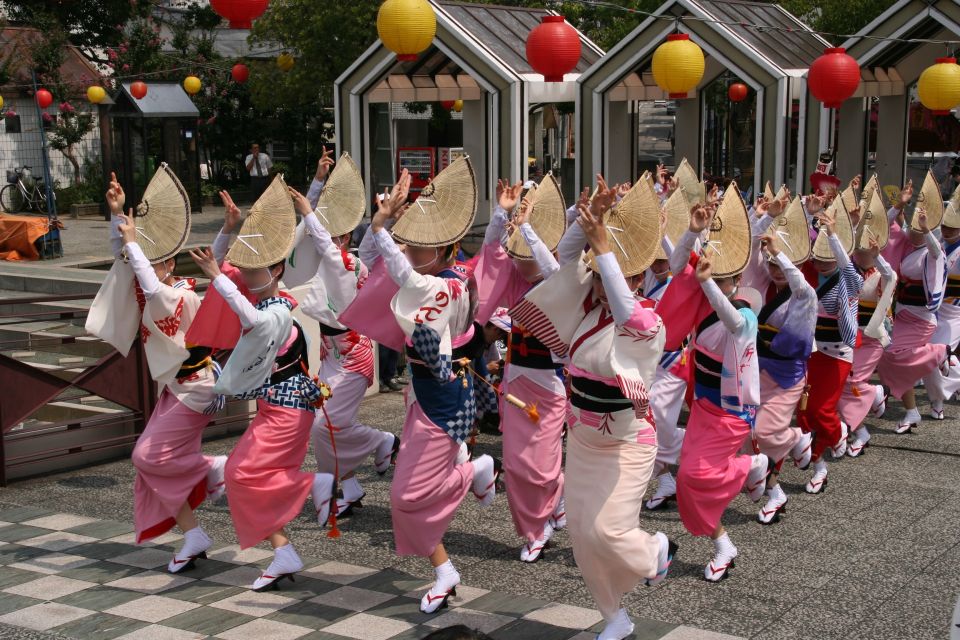
Performers in colorful yukata form long lines, moving in sync to shamisen, flutes, and drums. While there are designated stages, the real joy lies in watching dancers parade through the streets—and in some areas, visitors can even join in!
・Book accommodations early—Tokushima gets crowded during the festival.
・Watch both daytime parades and illuminated evening dances for contrast.
・Check out the “Niwa Odori” areas where visitors can join in.
・Explore the Awa Odori Kaikan museum for a deeper dive into its history.
🗓️ The History of Awa Odori
Awa Odori has its origins in the late 16th century during Japan's feudal era. The most widely accepted story is that the dance began in 1586, when Tokushima’s feudal lord, Hachisuka Iemasa, celebrated the completion of Tokushima Castle by inviting citizens to dance and make merry.
What started as a spontaneous celebration with joyful singing and sake soon evolved into a local tradition. Over time, this dance—marked by rhythmic music, exaggerated movements, and cheerful chants—became known as Awa no Odori, or “Dance of Awa,” named after the old province of Tokushima.
Despite being briefly banned during the Edo period due to its wild and free-spirited nature, the festival endured and flourished. Today, it stands as one of Japan’s oldest and most iconic dance celebrations, drawing over 1 million visitors each summer.
🎴 Kimetsu no Yaiba Collaboration 2025
In 2025, the beloved anime Kimetsu no Yaiba (Demon Slayer) will officially collaborate with the Awa Odori Festival in Tokushima. A special "Demon Slayer Ren" will perform on August 12 and 14, offering fans a rare live experience where tradition and anime merge.
The collaboration features original illustrations by the animation studio ufotable, portraying characters like Tanjiro, Nezuko, and the Hashira dressed in festive Awa Odori outfits—creating a buzz among anime and festival enthusiasts alike.
On August 14, voice actors Hiro Shimono (Zenitsu) and Yoshitsugu Matsuoka (Inosuke) will make guest appearances, dancing alongside costumed “mini Demon Slayers.” Some lucky fans selected through advance applications will even get the chance to join this unique Ren.
From August 11 to 25, exclusive merchandise will be available at official stores and partner shops. Items like acrylic stands and mini character illustrations featuring the cast in summer yukata will be sold for around ¥1,100.
👉 For details and event updates, visit the official collaboration page:
Kimetsu no Yaiba × Awa Odori Official Collaboration Site
🔗 Official Awa Odori Website
For the latest updates on schedules, venue maps, ticket information, and special events—including anime collaborations—visit the official Awa Odori website below.
Nebuta Matsuri (青森県) – 8/2〜8/7
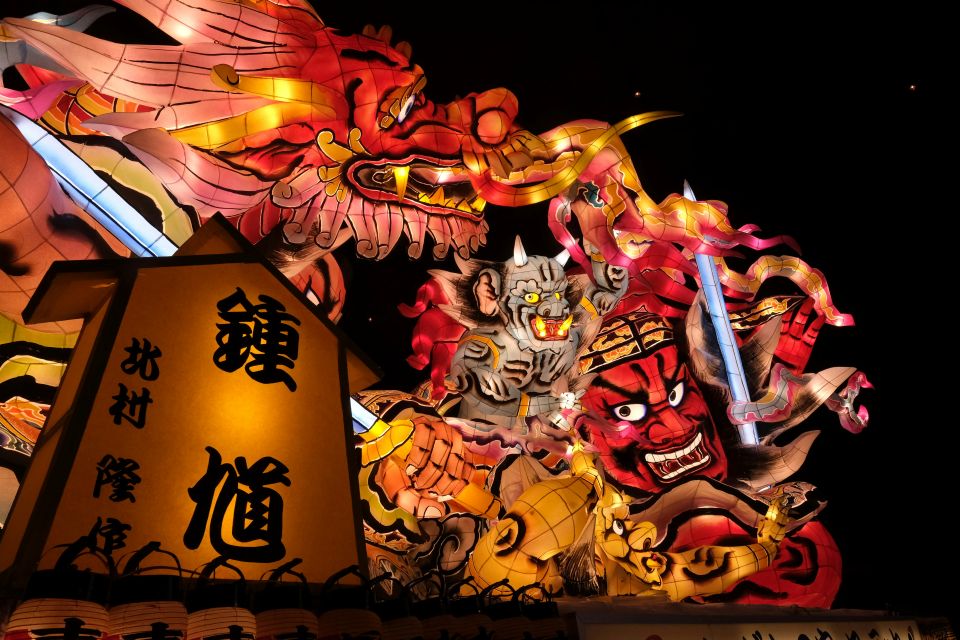
As the floats roll by, dancers called haneto fill the streets with rhythmic cries of “Rassera! Rassera!”—inviting everyone to join the fun. The final night features a dazzling fireworks display over Aomori Bay, offering a perfect conclusion to this dynamic summer celebration.
・Wear a yukata and join as a haneto dancer (registration required in advance).
・Best viewing spots are along the main parade route in central Aomori.
・Don't miss the final fireworks on August 7 by the bay.
・Plan accommodations early—hotels book up quickly during the festival period.
History of Nebuta Matsuri
The word “nebuta” is derived from “nemuri nagashi” (sleep drifting), a ritual meant to chase away drowsiness and bad luck through lantern-lit processions. Over time, the festival transformed into a grand summer celebration, with magnificent floats (nebuta) taking center stage.
These elaborate floats often depict legendary samurai, mythical creatures, or famous historical scenes. Crafted from washi paper and lit from within, they are paraded through the streets to the sound of taiko drums, flutes, and the distinctive chant: “Rassera! Rassera!”
Today, Nebuta Matsuri is recognized as one of Japan’s most vibrant festivals and has even been designated as an Important Intangible Folk Cultural Asset. Its blend of tradition, artistry, and community participation continues to captivate both locals and international visitors alike.
・Marvel at the illuminated giant nebuta floats parading through Aomori’s streets each night.
・Listen to the powerful rhythms of taiko drums and the vibrant cries of “Rassera!”
・Participate as a “haneto” dancer—visitors can rent costumes and join the parade!
・Catch the daytime float displays and get a closer look at the craftsmanship.
・Don’t miss the fireworks finale over Aomori Bay on the last night (Aug 7).
・Explore the Nebuta Museum WA-RASSE nearby for a deeper understanding of the festival’s artistry.
Access & Official Website
- From Tokyo: Take the Tohoku Shinkansen to Shin-Aomori Station (~3.5 hours), then transfer to a local train to Aomori Station (~5 min).
- By Air: Aomori Airport offers domestic flights. From the airport, take a shuttle bus (~35 min) to Aomori Station.
- Festival Area: Most events are centered around Aomori Station and Shinmachi Street, both walkable from the station.
For event schedules, access maps, and participation info, visit the official site:
https://www.nebuta.jp/




4. What to Bring and How to Enjoy Like a Local
1. Dress the Part: Yukata and Comfortable Footwear
If you're not used to traditional footwear like geta (wooden sandals), opt for comfortable sneakers or sandals. You’ll likely walk or stand for hours, so foot comfort is essential.
Want to blend in like a local? Add a sensu fan or kinchaku pouch to complete your look!
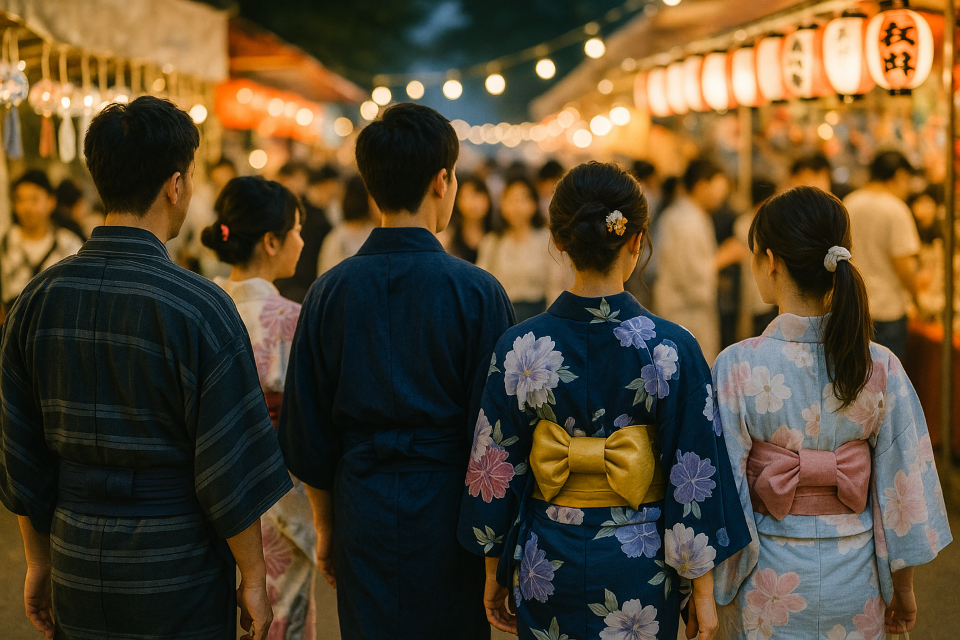
2. Must-Haves in Your Bag 🎒
- Hand towel or handkerchief: Great for wiping sweat or drying hands after street food.
- Portable fan: Stay cool in the summer heat—traditional uchiwa fans are stylish and functional!
- Cash (small bills and coins): Many stalls don’t accept cards or digital payments.
- Reusable shopping bag: Handy for carrying festival goodies or souvenirs.
- Water bottle: Stay hydrated while enjoying the fun!

Many festival stalls do not accept credit cards or digital payments.
Bringing plenty of coins and small bills will make your festival visit much smoother.
3. Stay Cool and Hydrated 💧
- Drink water regularly: Carry a refillable bottle and hydrate often.
- Wear breathable clothing: Fabrics like cotton or linen help regulate body temperature.
- Use cooling sheets: These handy wipes are available at any convenience store and provide instant refreshment.
- Take breaks in shaded or air-conditioned areas: Resting in cooler spots can keep you from overheating.
- Enjoy cool treats: Traditional snacks like kakigori (shaved ice) not only taste great but also help beat the heat!
4. Festival Etiquette You Should Know 🙏
- Be mindful of space: Festivals can get crowded, so avoid blocking walkways or cutting in lines.
- Dispose of trash properly: Look for designated bins—don’t litter. If unsure, take your trash home with you.
- Follow photography rules: Some performances or shrine areas may not allow photography. Always ask or check signs.
- Respect traditional dances and rituals: If you join in, follow the locals’ lead and be gentle and respectful.
- Keep your voice down at night: Be considerate of local residents when leaving the festival grounds.
5. Join the Fun: How to Participate 🕺
Japanese summer festivals are all about vibrant energy, colorful sights, and community spirit! If you want to take part, here’s how to jump in and enjoy the festivities:
🎆 Watch the fireworks:
Don’t miss the spectacular finale lighting up the sky!
🎯 Try festival games:
Have fun with goldfish scooping, ring toss, and more!
💃 Join Bon Odori dances:
Follow the moves and dance with everyone in the circle.
🍡 Enjoy street food:
Yakisoba, takoyaki, kakigori—taste all the festival favorites.






